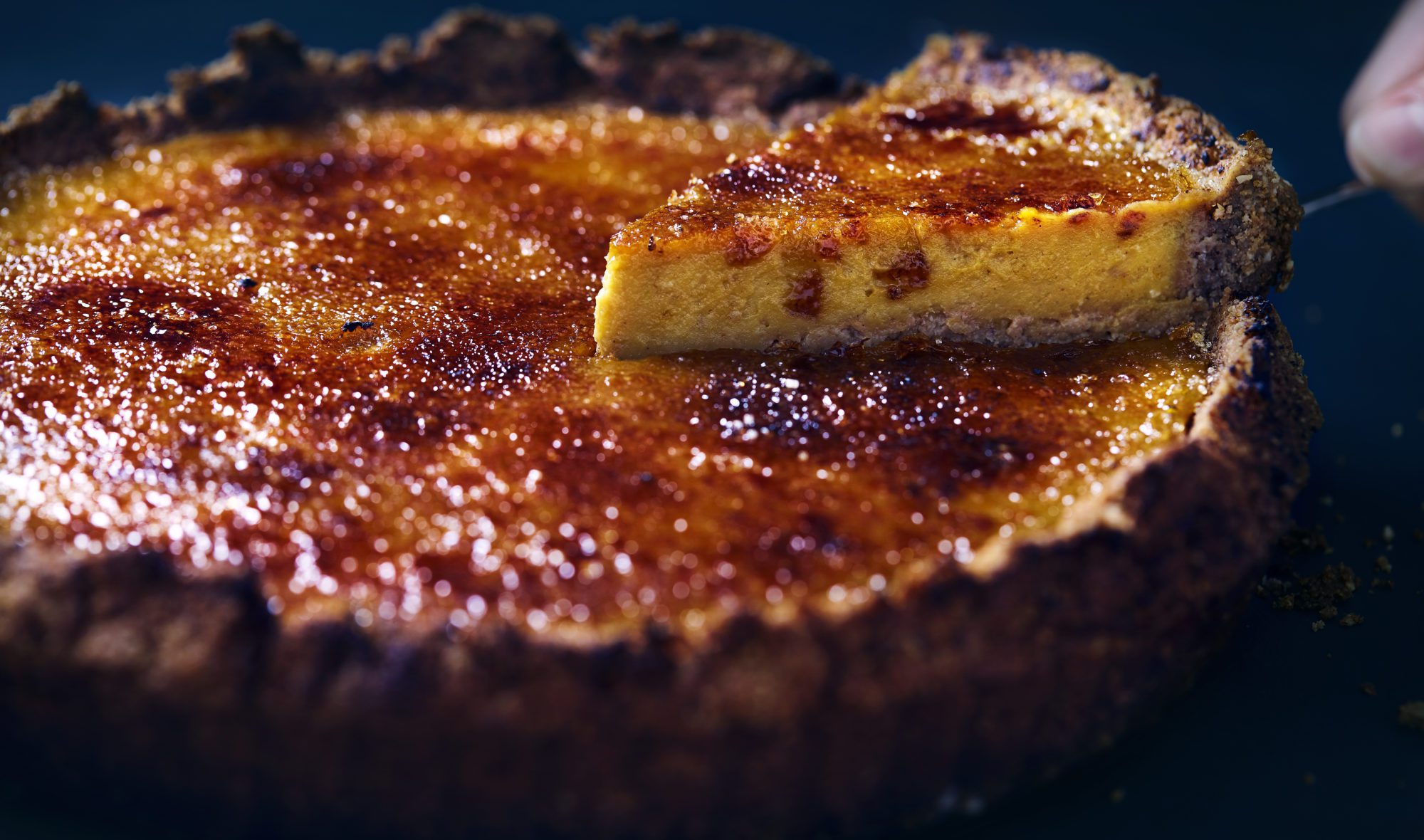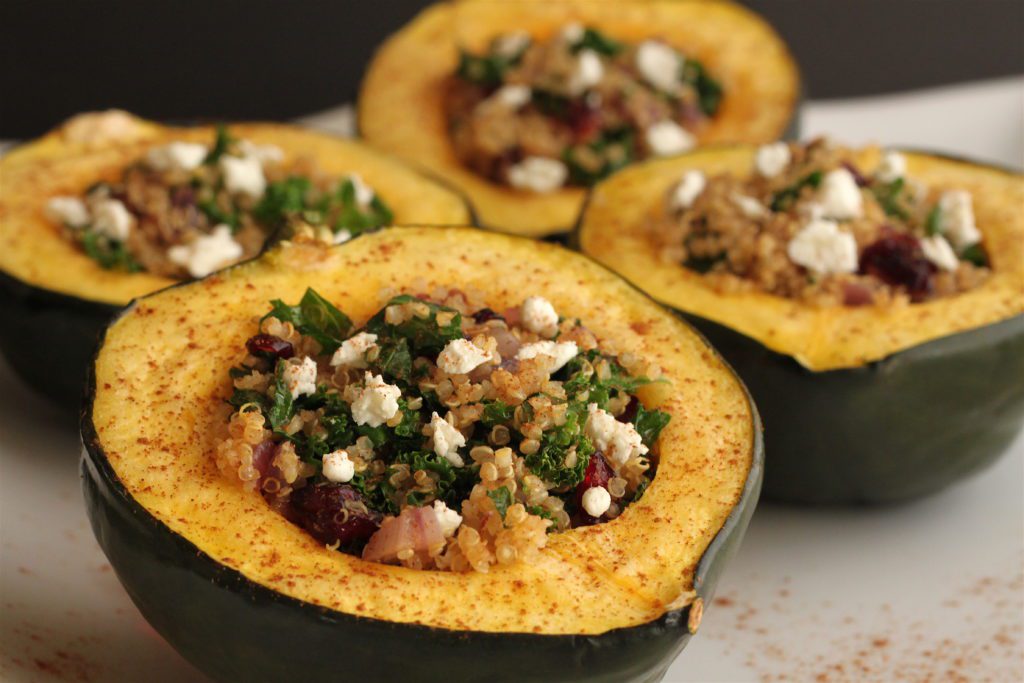
Join PN Level 2 for less than $9 USD/day! Affordable monthly payments now open.

Acorn squash, as its name suggests, is shaped like a scaled-up acorn, except that it has deep longitudinal ridging and dramatic forest green skin. On the inside, acorn squash bears a beautiful yellow-orange flesh that turns soft and velvety when cooked. In flavor, acorn squash is pleasantly starchy and slightly sweet, with a hint of nuttiness. Acorn squash is a nutritious complex carbohydrate and is rich in vitamin A (mostly in the form of beta-carotene), potassium, and magnesium. Although they are not typically eaten in North America, the seeds, the young leaves, and the yellow trumpet flowers of the squash plant are all edible, and rather delicious. If you have the opportunity, consume as many components of the squash plant as you can.
As its name suggests, acorn squash is shaped like a scaled-up acorn, with a top-heavy roundness that tapers to a pointed end.
Acorn squash, which is sometimes called pepper squash, is a winter squash and a member of the Curcubita pepo family, which also include cousins like zucchini and pumpkin.
From seed, acorn squash takes less than three months to grow to full maturity. Once they are harvested, winter squash are typically “cured”. Over a period ranging from a week to a month, squash are left to sit in the sun, being rotated at intervals for even exposure. This “sunbathing” hardens the exterior skin in order to protect the flesh inside, thereby extending the shelf-life of the squash. This process also serves to sweeten and intensify the flavor of the flesh inside.
Squash is native to Central and North America, but multiple varieties are now grown and consumed all over the world. Although they are not popular foods in North America, the seeds, the yellow trumpet squash blossoms, as well as the young green top leaves are also edible.
Acorn squash is shaped like a large spinning top, with one heavy round end and one pointed end. The acorn squash is typically dark green on the outside, often with a bright orange or yellow splotch, and deep longitudinal ridges. Less commonly, acorn squash may have a glowing orange or white exterior.
Inside, the acorn squash reveals a hollow crevice full of seeds and stringy squash mush, and a beautiful yellow-orange flesh that, when cooked, becomes soft and velvety. In flavor, acorn squash is sweet, starchy, slightly nutty, and has a hint of pepper. When cooked, the skin softens and is also edible.
One cup of cubed, baked acorn squash (about 205g) has 115 calories, 2.3g of protein, 0.3g of fat, 29.9g of carbohydrates, and 9.0g of fiber. Acorn squash is an excellent source of vitamin A (in the form of beta-carotene), potassium, and a good source of magnesium.
Acorn squash are in season in North America around early fall, but they are likely to be available throughout the winter as well. During these seasons, acorn squash can be found at most grocery stores, fruit and vegetable markets, and farmers’ markets.
When selecting a good acorn squash, the same advice for the selection of most winter squash applies:
Choose squash that are firm and heavy for their size. Inspect the rind for mold, wrinkling, or soft spots, which can all be signs of decay. Note that some beige or grey scaling or spotting is normal and not a sign of a poor quality squash; prior to cooking, the spots can be nicked off. The stem, if it is still attached, should be hard and dry.
Winter squash are relatively stable outside the fridge, although acorn squash is less stable than some other varieties. Depending on the maturity of the acorn squash when purchased, it may last for anywhere from ten days to a month in a cool dry place outside of the fridge.
Once an acorn squash is cut, it can last in an airtight container in the fridge for about three days, or frozen for up to six months.
Due to its ridging, acorn squash are a nuisance to peel. Luckily, the skin can be eaten and needs no such fuss.
One of the easiest and most delicious methods of cooking acorn squash is to roast it in halves.
Here’s how to do it:
First cut the squash in half lengthwise from stem end to butt. Carve out the stem and the tough bit at the butt, and scrape out the seeds and mush with a spoon. Then, place both halves, cut side up, on a baking tray. Drizzle the halves with olive oil or smear with a pat of butter, and sprinkle with salt. Place in a 400 degree Fahrenheit oven and bake for about 45 minutes, or until the edges of the squash are caramelized and the flesh is soft and easily pierced with a fork. Serve as is, or add to a recipe of choice.

This side dish is not only aesthetically pleasing, but the cinnamon creates the sweetness and warmth we often crave in a comfort food. It’s bound to become a new favorite!
Prep Time: 10 minutes Cook Time: 50 minutes Yield: 4 servings
For the squash:
Preheat oven to 400 degrees Fahrenheit.
Cut acorn squash in half lengthwise, remove seeds and place flesh side down on a baking dish with 1 cm water. Bake for 30 minutes.
After 30 minutes – remove the water from the baking dish in the oven and turn the squash so it’s flesh side up (carefully using oven mitts as it will be hot). Melt the butter and mix with 1 tsp maple syrup. Brush each squash half with the mixture. Return to oven and bake face up for another 20 minutes – until it’s soft enough for a fork to poke through.
For the filling:
Cook quinoa in water according to the directions on the package.
Heat a medium-size skillet with 1 tsp extra virgin olive oil and sauté the chopped red onion and kale until soft.
Once quinoa is cooked – add kale and onion mixture along with dried cranberries.
Reserve goats cheese for the assembly stage.
For the dressing:
Mix all ingredients in a bowl.
Assembly:
Slowly add the dressing to the quinoa mix to ensure it doesn’t get too wet.
Divide the quinoa filling evenly into each half of the acorn squash once the squash is fully cooked.
Crumble goats cheese on top and add an extra sprinkle of cinnamon if desired.
Serve warm or cold and enjoy!
Precision Nutrition’s Encyclopedia of Food expands every single month as we highlight new foods and showcase beautiful food photography. If you’d like to stay up to date, simply click this link. From there, we’ll send you a FREE copy of our recipe book. We’ll also let you know when new and delicious foods are added to the site.
Acorn squash, as its name suggests, is shaped like a scaled-up acorn, except that it has deep longitudinal ridging and dramatic forest green skin. On the inside, acorn squash bears a beautiful yellow-orange flesh that turns soft and velvety when cooked. In flavor, acorn squash is pleasantly starchy and slightly sweet, with a hint of nuttiness. Acorn squash is a nutritious complex carbohydrate and is rich in vitamin A (mostly in the form of beta-carotene), potassium, and magnesium. Although they are not typically eaten in North America, the seeds, the young leaves, and the yellow trumpet flowers of the squash plant are all edible, and rather delicious. If you have the opportunity, consume as many components of the squash plant as you can.